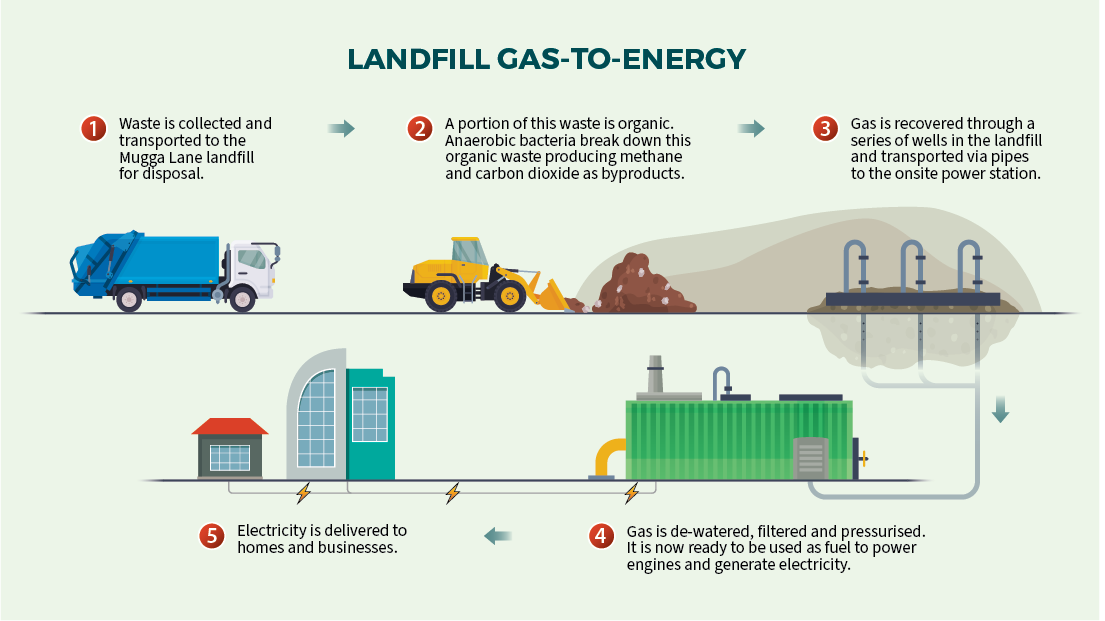 Introduction
Introduction
Capturing gas produced in landfill is an important part of managing our impact upon the environment and reducing pressure on natural resources.
The ACT generates approximately one million tonnes of waste each year of which it recovers about 70%. The remaining waste that can’t be reused, recycled or recovered must be disposed of in landfill.
Mugga Lane is the main ACT landfill site and has been in use since the 1970s.
The problem
Over time the organic matter buried in a landfill undergoes anaerobic decomposition (without oxygen) and generates gases including methane. When released into the atmosphere, methane acts as a greenhouse gas trapping heat and contributing to global warming at 25 times the rate of carbon dioxide. Up to 50% of all waste in landfill is organic matter such as food, textiles, timber and household waste.
The solution
Landfill gas capture and processing technology transforms waste into a valuable resource — energy. LGI Limited (LGI) is contracted to the ACT Government to undertake gas capture and power generation at the Mugga Lane landfill gas power station. The gas collected and processed by LGI at the Mugga Lane landfill gas to energy facility can power 5,700 homes. Four biogas fuelled generators have been installed by LGI which each generate 1.06 megawatts per hour, resulting in an estimated 37,000-megawatt hours of green electricity every year.
The benefits to the community include:
- reduction in greenhouse gas emissions
- power generation
- less demand on fossil fuel sources.
The capture also reduces health and safety issues such as odour emissions and the potential for landfill fires exacerbated by gases. The ACT Government is committed to reducing waste generation and increasing resource recovery.
How it works
- The gas must be continually extracted under pressure from the landfill to prevent the landfill gas escaping and allow back up capacity to be available for maintenance.
- The captured landfill gas first enters the thermal chamber of the facility and is cooled to below 6° Celsius.
- Cooling the gas enhances the removal of condensation, the foul-smelling hydrogen sulphides, ultimately drying the landfill gas.
- The dried landfill gas is then pressurised and directed into a scrubber/filter which removes the siloxanes that would otherwise clog the internals of the engines. The main source of siloxanes in a landfill are body wash, shampoo and soap products. The scrubber has a self-cleaning cycle where it shuts down and regenerates the media to ensure maximum siloxane removal occurs. The landfill gas is now dry, clean, and pressurised in preparation for the engines.
- The gas is burnt in the combustion chamber of the four V20 gas engines, driving the generators, producing the green electricity exported to the local power grid.
- There are two back up flares used to burn off the excess gas, if necessary.
Reference
1. A cow produces about 600 litres of methane gas a day which is the equivalent to filling 40 balloons: www.geocaching.com/geocache/GC14MX2_flatulent-cows
If you would like to print this out please see the PDF Factsheet (PDF 340KB)



